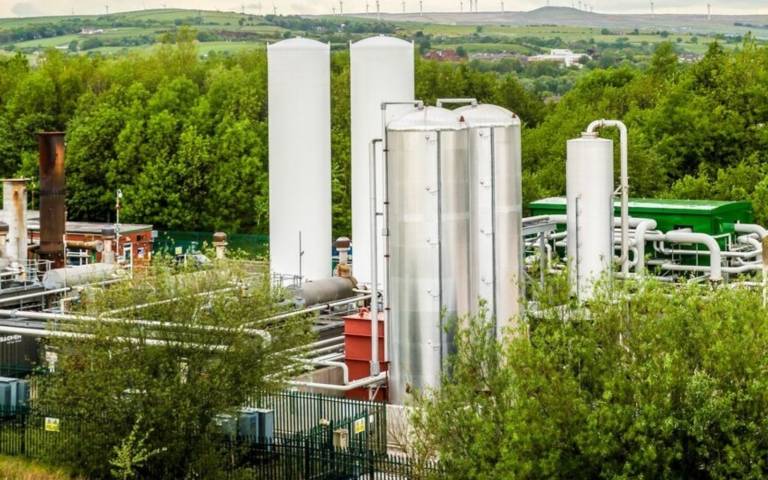The carbon dioxide removal potential of Liquid Air Energy Storage
28 April 2020
Honorary Research Associate Andrew Lockley publishes paper, The carbon dioxide removal potential of Liquid Air Energy Storage: A high-level technical and economic appraisal.

Whilst most fossil electricity can be deployed on demand, solar and wind power can only be fed into the grid at the time of production. Any excess is wasted, resulting in a risk of later undersupply – particularity during night time hours and the winter period. To combat this issue, a wide range of storage technologies have been proposed.
Andrew’s paper focuses the carbon dioxide removal (CDR) potential of two of these technologies, Liquid Air Energy Storage (LAES) and Compressed Air Energy Storage (CAES).
LAES uses excess electricity to produce liquid air. This is stored in a tank at low pressure, until it’s ready to use. When ready, the liquid air is pumped to high pressure, evaporated and heated. The high-pressure gas then drives a turbine to generate electricity. Alternatively, CAES similarly involves converting electrical energy into high-pressure compressed air - to be released at a later time, driving a turbine generator to produce electricity.
The paper examines these techniques to answer the following questions:
- What would be the economic opportunity of adding a CDR by-product to the business model for these storage technologies?
- What proportion of expected CDR requirements could be met using large-scale deployment of LAES or CAES, if modified to capture CO2?
- Could radical modification of CAES potentially provide a viable way to provide all required CDR services?
Andrew explains his findings, "Liquid Air Energy Storage (LAES) can significantly contribute to removing CO2 from the air. That is something LAES operators can potentially earn income from, making their firms more competitive."
"Compressed Air Energy Storage (CAES) could potentially be adapted to remove very large amounts of CO2 from the air. Much more work is required, to be certain that this adaptation is feasible and affordable."
According to the article, “neither LAES nor current CAES technologies could provide all necessary CDR – but CDR revenue streams may influence the strongly the prevalence and design of LAES and potentially CAES systems. A highly modified CAES scheme, with unknown economics, is the only way to affect the global scale CDR using these technologies.”
 Close
Close

